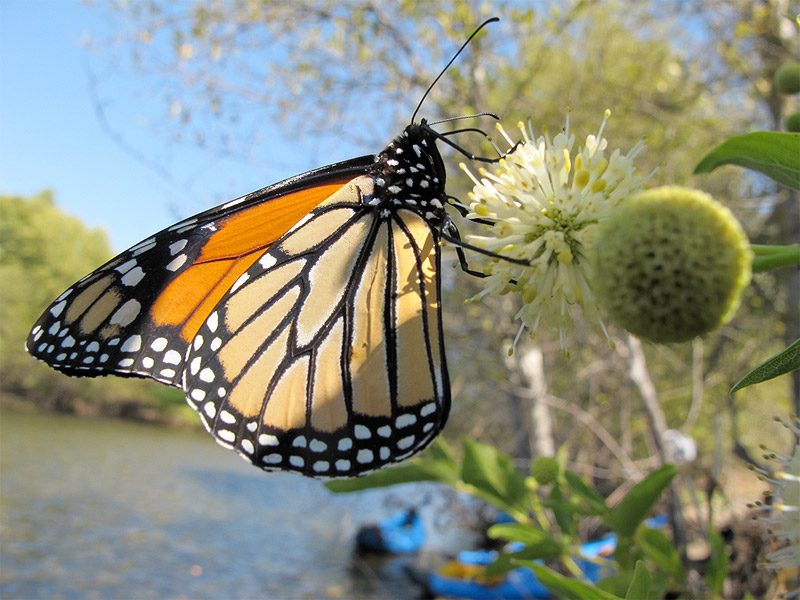Friday September 23, 2011

Today is the first day of fall in the northern hemisphere, and so it only seems appropriate to mention migration. Whether by birds, insects or fish, migration is a universal behavior within the animal kingdom. Monarch butterflies, like this one photographed a couple of day ago, travel up to 2,500 miles to over-winter in California and Mexico. Migrations are generally driven by the fact that resources on Earth fluctuate seasonally, causing some animals to travel in search of food or breeding grounds, as is the case for Pacific salmon.
For Pacific salmon, their fall migration results in the end of their lifecycle. After spending one to five years in the Pacific Ocean feeding and growing to adulthood, species like the Chinook salmon (Oncorhynchus tshawytscha) will travel hundreds of miles upriver to their natal spawning grounds. The process of sexual maturity begins in the ocean many months prior to entering freshwater to reproduce. Research has demonstrated that the timing of migration and breeding is controlled by genetics (Quinn 2005). This inherited drive to migrate great distances, and against many odds, is impressive to say the least. Whether you’re looking for salmon or butterflies, keep your eyes open for the fall migration.
